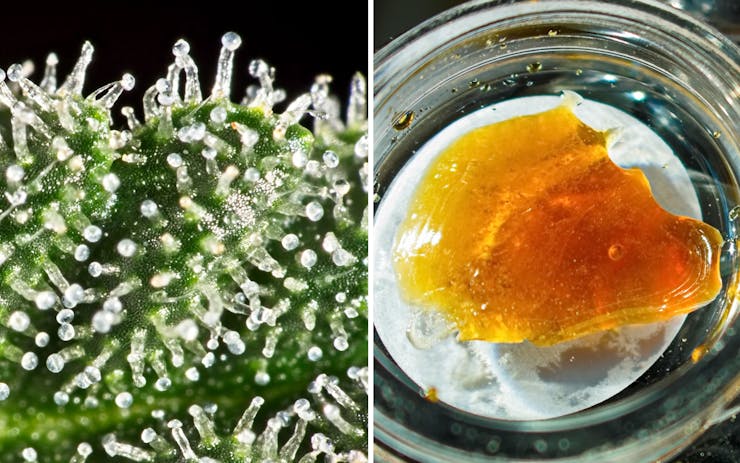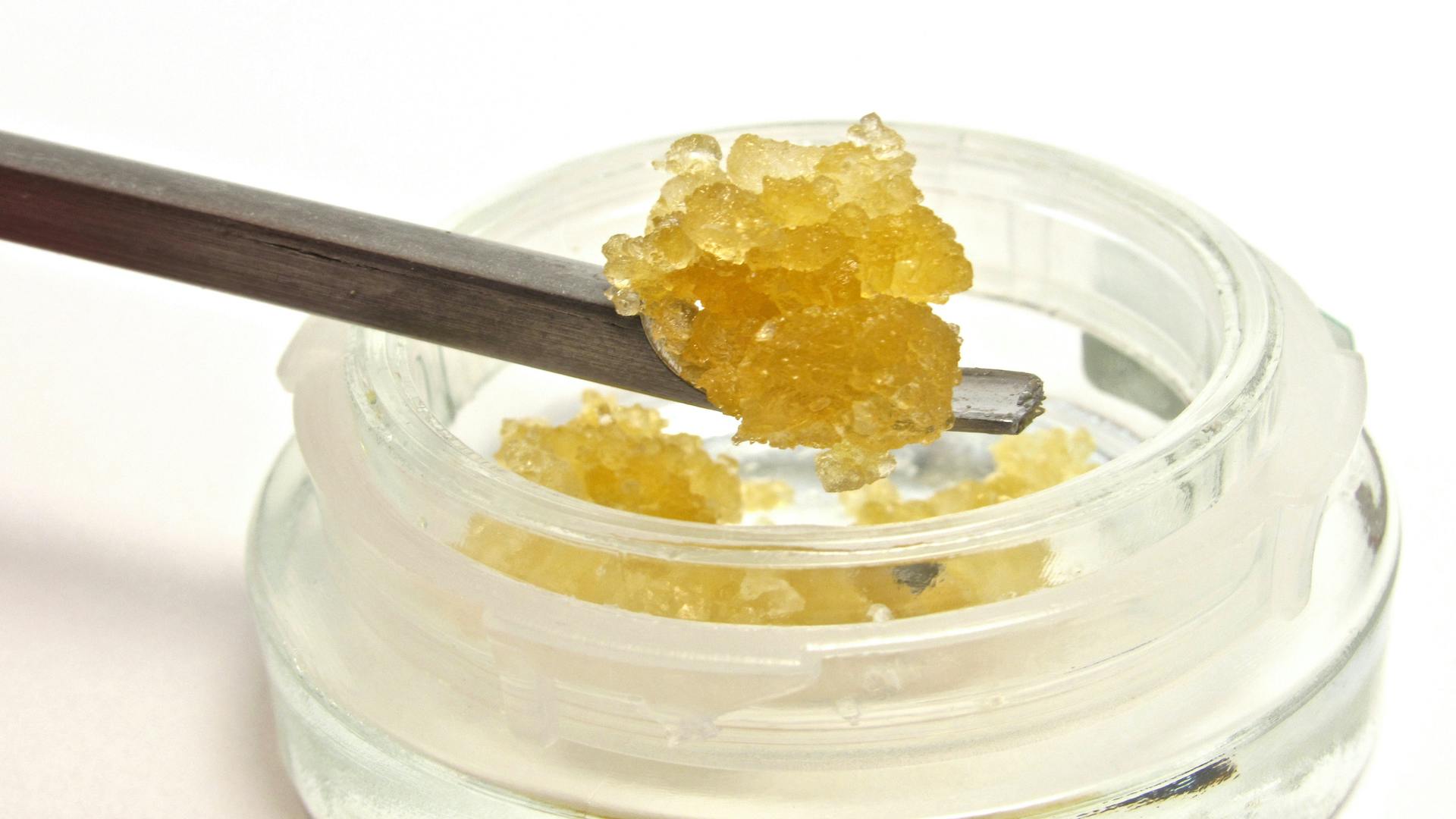Cannabis is most commonly consumed in its flower form, so many growers focus on getting high yields to increase profits. But some are choosing to focus on the burgeoning concentrate market instead.
Growing for concentrates is slightly different than growing for flower because the end goal is to have a plant that produces a lot of trichomes, in order to have that flower then processed. Trichomes are the glandular crystals that form on cannabis buds that contain cannabinoids and terpenes. They can also be referred to as resin, crystals, or sugar.
The cost of sending your material off to be processed for concentrates can be a financial deterrent for some growers, however, with rosin pressing technology, many growers are now able to process their own concentrates to get high-end oil.
Here we’ll flip the script and look at how to focus your garden for growing plants that will produce great concentrates.
What Makes a Good Plant for Concentrates
If you are going to concentrate the flavors of a strain, it’s best to start with something that already has a delicious flavor and high that you like.
To get a good concentrate, you’ll need to start with good flower. The best concentrates are extracted from quality flower that produces bulbous trichome heads.
Plants that produce large trichome heads will have more oils, which in turn can hold more cannabinoids and terpenes, making them able to produce more flavorful concentrates.
It’s especially important to have big trichome heads when making solventless hash because they’ll break off easier in the hashmaking process.
Strains with complex terpene profiles with multiple terpenes can produce unique flavors. Sometimes trading a high yield for novelty is worthwhile—complexity and rarity can make for a great concentrate. If you have a special strain, making it into a concentrate can let you further appreciate its subtle qualities.
How to Improve the Quality of Your Plants
Because concentrates focus in on a strain’s terpene and flavor profile, you don’t want unwanted compounds like those found in pesticides and nutrients to end up in your concentrates. Here are some ways to improve the quality of your plants while protecting and preserving terpenes.
Shop highly rated dispensaries near you
Showing you dispensaries nearUse a Complete Soil
This soil comes loaded with most of the nutrients your plants need, all in organic form, making it easier for roots to uptake them.
Avoid Foliar Spraying
Foliar spraying helps combat nutrient deficiencies and pest problems, but you want to avoid this practice when plants are flowering, as the residue will show up as a contaminant in your concentrate. If you do need to spray plants, do so before flowering begins and only use organic sprays.
No Pesticides
Stay away from hazardous chemicals that can’t be flushed out of your crop. These will carry through into your concentrates and are dangerous to consume. Consider using integrated pest management strategies, predatory mites, or organic foliar sprays to keep your garden healthy without impacting your flower.
Flush Your Crop
If growing with non-organic fertilizers or nutrients in a soil or hydro-based medium, give your plants only water in the last two weeks of flowering before harvest. This will give them time to flush out impurities, making for cleaner flower and therefore a cleaner concentrate.
Tips and Tricks for Increasing Trichome Production
These simple methods can make a big impact and greatly improve the quality of your end product.
Room Temperature
Specific terpenes start to break down around room temperature, making climate control in your grow room essential for the quality of your concentrate’s flavor. You can use a climate-control system—and even an infrared heat reader—to observe the temperature of your colas when plants are flowering. Ideally, you want your canopy to be below 75 degrees.
CO2
CO2 is an essential part of photosynthesis and without it your plants will not be able to fully utilize nutrients. Give your plants a boost with a CO2 burner to increase the size of your plants during both the vegetative and flowering phases. Bigger plants will have more surface area and therefore more resin because of the higher yields.
Finishing Cold
This is open to debate, but some growers argue that reducing the temperature in your grow room right before harvest can cause cannabis plants to increase their trichome production.
The idea is that the stress created by lowering the temperature will make a cannabis plant produce more trichomes in an attempt to protect itself. When a plant is about to die, it will produce more resin to attract more bugs in order to pollinate. Some growers will even cut off a plant’s watering a few days before it’s harvested to induce stress
Consider lowering the temperature to the low 60s no more than 2 weeks before harvest, when buds are mostly done growing.
What to Do After Harvest
The last step in accentuating delicious terpenes in your cannabis comes at harvest. Some growers freeze their buds without curing before making concentrates, while others prefer to cure prior to making concentrates.
Here are some different approaches to how to preserve terpenes post-harvest.
Freezing
Freezing prevents terpenes and cannabinoids from breaking down and captures the fresh profile of a plant when its terpene content is the highest.
If you are planning to make a concentrate within a couple weeks after harvest, you can skip the curing process altogether and freeze your buds. You’ll want to remove fan leaves and buck down the colas until all buds are no larger than a golf ball or so and then package the buds.
Drying and Curing
If you’re not sure if you’re going to turn your flower into concentrates at harvest time, properly drying and curing your plants is a must for protecting trichomes. Hang your plants so they have plenty of space to breath in a room with good air circulation, at a temperature between 60-70°F with a humidity of 45-55%.
When drying is complete, put your buds into glass jars where they can cure slowly, popping off the lids (a.k.a. burping) a few times a day at first to let the buds breath and release moisture. Overtime, opening the jars will become less necessary and the buds will continually improve, usually for up to 6 months.
As mentioned previously, some terpenes will break down at room temperature (70°F), so keep curing temps between the high 50s and mid-60s with 55% humidity to maintain quality.






